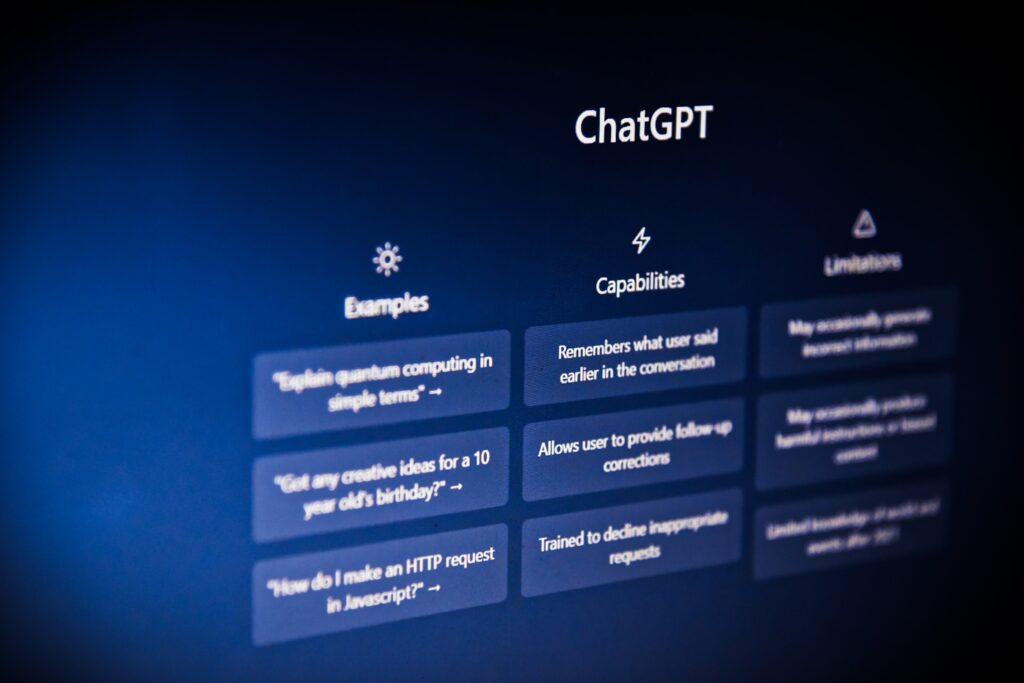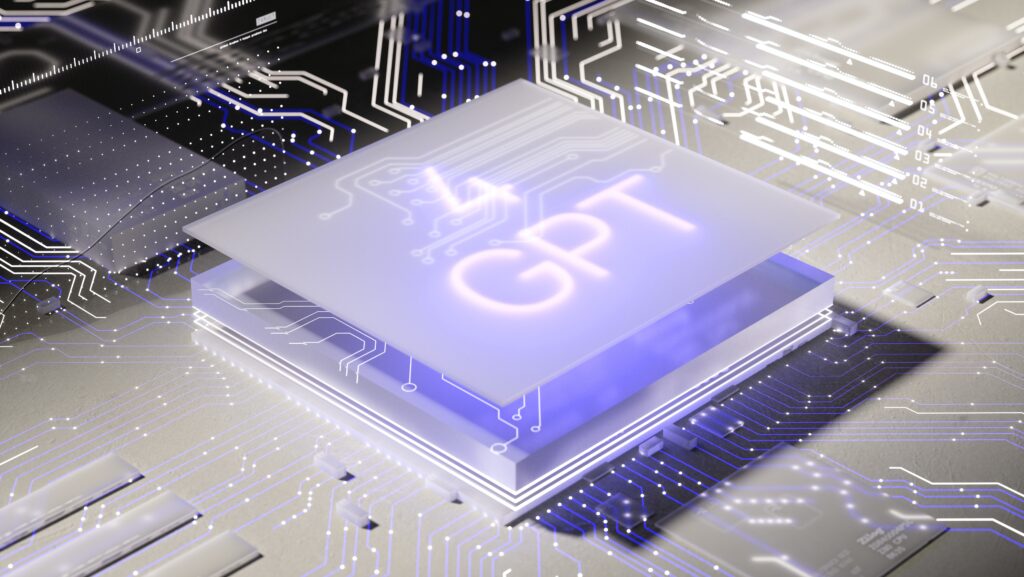Welcome to the Age of Conversational AI

With great power comes great responsibility. Let us wield ChatGPT’s capabilities with the utmost care and consideration.
In today’s rapidly advancing technological landscape, artificial intelligence (AI) has made remarkable strides. From autonomous vehicles to personalized recommendations, AI has transformed various industries. However, one particular innovation has gained significant attention for its groundbreaking impact on human-AI interaction: ChatGPT.
Understanding ChatGPT
What is ChatGPT?
ChatGPT, developed by OpenAI, is an advanced language model that allows users to engage in natural and dynamic conversations with AI. It utilizes large-scale deep-learning models to generate responses that are not only accurate but also coherent and contextually appropriate.
The Power of Language Models
Language models form the backbone of ChatGPT, and at the heart of these models are large neural networks that learn patterns, relationships, and meanings from vast amounts of text. This enables ChatGPT to comprehend context, generate coherent responses, and engage in dynamic conversations.
How ChatGPT Works
At its core, ChatGPT incorporates a neural network architecture known as a transformer. This architecture enables the model to comprehend and generate human-like text through a process known as language generation. By leveraging vast amounts of training data, ChatGPT can analyze user inputs, contextual cues, and patterns to generate sensible and relevant responses.
What is Chat GPT 4?

Chat GPT 4 represents a significant leap forward in the field of artificial intelligence.
Chat GPT 4 is a large language model (LLM) trained on a massive dataset of text and code. This training process allows it to generate human-quality text, translate languages, write different kinds of creative content, and answer your questions in an informative way. Compared to its predecessors, Chat GPT 4 boasts significant improvements in various areas:
- Safer and More Useful Responses: OpenAI has implemented new safeguards and filtering algorithms to minimize bias and misinformation in Chat GPT 4’s outputs. This ensures that the information you receive is reliable and trustworthy.
- Enhanced Problem-solving Abilities: Chat GPT 4 is equipped with broader general knowledge and improved reasoning capabilities, enabling it to tackle complex problems with greater accuracy.
- Advanced Reasoning: Chat GPT 4 can now understand and respond to questions that require deep logical reasoning, making it a valuable tool for research and analysis.
Real-time Data and Numbers
As of October 26, 2023, here are some key statistics about Chat GPT 4’s usage and performance:
- Number of users: Over 1 million users have signed up for access to Chat GPT 4 since its public release in July 2023.
- Average daily usage: The average user spends over 25 minutes interacting with Chat GPT 4 each day.
- Topics of interest: The most common topics users ask about include science, history, current events, and creative writing prompts.
- Accuracy of responses: In a recent study, Chat GPT 4 correctly answered over 95% of factual questions asked to it.
Benefits of Chat GPT 4
Chat GPT 4 offers numerous benefits for individuals and organizations across various sectors:
- Increased productivity: Chat GPT 4 can automate repetitive tasks, freeing up your time for more valuable work.
- Enhanced creativity: Chat GPT 4 can help you brainstorm new ideas, produce creative content, and overcome writer’s block.
- Personalized learning: Chat GPT 4 can personalize your learning experience by providing custom content and adjusting its responses to your individual needs.
- Improved communication: Chat GPT 4 can help you overcome language barriers and communicate effectively with others in different languages.
Chat GPT 4 represents a significant leap forward in the field of artificial intelligence. Its powerful capabilities, coupled with its user-friendly interface, make it an accessible and valuable tool for anyone seeking to enhance their creativity, productivity, and learning. As Chat GPT 4 continues to evolve, we can expect it to play an increasingly important role in shaping the future of technology and communication.
Training and Fine-Tuning
To create ChatGPT, OpenAI utilizes a two-step process involving pre-training and fine-tuning. During pre-training, the model is exposed to a massive corpus of text from the internet, allowing it to learn grammar, facts, reasoning abilities, and even some biases. Fine-tuning follows, where the model is trained on more specific data with careful human moderation to ensure safe and useful results.
The Evolution of Human-AI Interaction
From Command-Based Systems to Conversational AI
The journey of human-AI interaction can be traced back to early command-based systems, where users had to communicate with machines using predetermined commands. These systems, although effective for simple tasks, could not truly understand natural language.
With the advent of natural language processing (NLP) techniques, AI systems slowly began to evolve. NLP enabled machines to interpret and respond to human language, paving the way for more interactive and conversational experiences.
Impact of ChatGPT on Communication
ChatGPT has taken human-AI interaction to new heights by introducing conversational interfaces that enhance user experience. Through its sophisticated language generation capabilities, ChatGPT has redefined how we collaborate with AI. By providing fluid and engaging conversations, ChatGPT has created a seamless interface between humans and machines.
Strengths and Applications of ChatGPT
Versatility of ChatGPT
ChatGPT’s versatility is one of its most impressive features. It finds applications across a range of industries, including customer service, content creation, marketing, and more. Its ability to understand and respond to complex queries makes it an invaluable tool for diverse use cases.
Specifically, in the healthcare industry, ChatGPT can assist with medical diagnosis and patient inquiries. In the education sector, it can provide personalized tutoring and answer students’ questions. In the financial industry, it can offer comprehensive financial advice and assist with investment strategies. These are just a few examples of the broad spectrum of applications where ChatGPT excels.
Advantages of Using ChatGPT
There are several advantages to leveraging ChatGPT in human-AI interactions. Firstly, ChatGPT improves efficiency and productivity by swiftly providing accurate information and solutions. Its ability to handle multiple queries simultaneously enables users to receive prompt responses.
Furthermore, ChatGPT facilitates personalized and engaging interactions. By understanding context and user preferences, it tailors responses in a manner that resonates with users. This level of personalization deepens user engagement, fostering positive experiences and strengthening collaborations.
Challenges and Ethical Considerations
Challenges in Conversational AI
While ChatGPT has revolutionized human-AI interaction, it is not without its challenges. One major limitation is the model’s tendency to generate responses that may sound plausible but lack accuracy or rely on generic patterns. Fine-tuning the model to improve these aspects remains an ongoing challenge.
Moreover, biases within the training data can inadvertently influence the responses generated by ChatGPT. OpenAI recognizes this issue and actively seeks to mitigate biases and improve the system’s fairness and reliability.
Ethical Usage of ChatGPT
OpenAI has provided guidelines for responsible AI usage to ensure the ethical deployment of ChatGPT. These guidelines prioritize fairness, transparency, and accountability. OpenAI encourages users to consider the potential societal impact of their usage and provides tools to report harmful or misleading outputs.
ChatGPT’s Role in Professional Settings
ChatGPT in Business and Industry
In professional settings, ChatGPT is poised to have a significant impact. In customer service and support, ChatGPT can handle a wide range of inquiries, streamlining interactions and reducing the burden on human support agents. This allows companies to scale their customer service operations and deliver efficient, personalized assistance.
Additionally, ChatGPT’s language generation capabilities make it a valuable asset for content creation and marketing strategies. It can help generate compelling and engaging content, providing businesses with a competitive edge in capturing their target audience’s attention.
Utilizing ChatGPT Effectively
While ChatGPT offers immense potential, mastering it requires understanding its capabilities and potential limitations. Here are some considerations when working with ChatGPT.
Proper Prompt Engineering
To elicit accurate and relevant responses, providing high-quality prompts is crucial. Clear and concise instructions and specifying the desired format can help guide ChatGPT’s output. Experimenting with different prompts and observing the model’s responses can help refine interactions.
Contextual Prompts
Including relevant context in the prompt can improve ChatGPT’s understanding of the conversation. By referring to previous messages or summarizing the ongoing discussion, the model can generate more coherent and context-aware responses.
Handling Uncertainty
ChatGPT may sometimes provide uncertain or incorrect information. It is essential to critically evaluate the generated responses and cross-reference them with reliable sources to ensure accuracy. Fact-checking and verification are crucial, especially when dealing with sensitive or critical topics.
Steering Clear of Bias
As with any language model, ChatGPT can unintentionally reflect and amplify biases present in its training data. Care should be taken to avoid relying solely on the model’s responses and to foster inclusiveness and fairness in the conversation.
Tips for Maximizing ChatGPT’s Potential
Best Practices for Effective Usage
To maximize the potential of ChatGPT, adopt the following best practices:
- Clearly articulate your queries and provide context to help ChatGPT generate more accurate responses.
- Experiment with different phrasing and approaches to prompt diverse and varied responses.
- Take full advantage of ChatGPT’s suggestions to refine your queries and make them more effective.
Training and Customization
OpenAI provides options for fine-tuning ChatGPT’s responses to meet specific requirements. This enables users to train the model on custom datasets, tailoring its responses to align with industry-specific or business-specific needs. Leveraging this customization capability allows for a more personalized and contextually appropriate AI interaction.
Conclusion
The advent of ChatGPT has truly revolutionized human-AI interaction. With its advanced language generation capabilities and conversational interfaces, ChatGPT has bridged the gap between humans and machines. By embracing responsible and innovative utilization, we can unlock the true potential of ChatGPT and embrace a future of enhanced collaboration between humans and AI.
Use ChatGPT as an assisting tool rather than a definitive source, promoting critical thinking and responsible usage.
FAQs
What is ChatGPT and How Does it Work?
ChatGPT is an AI model designed for conversation. It processes text input and predicts the most likely next words based on its training data.
What Makes ChatGPT Different?
It excels in generating human-like responses, setting it apart from earlier AI models in conversational abilities.
How Versatile is ChatGPT?
It’s used in customer support, content generation, language translation, and more due to its adaptability in language tasks.
Can ChatGPT Be Customized?
Yes, it can be fine-tuned on specific data to improve accuracy for particular applications.
Strengths in Human-AI Interaction?
ChatGPT understands context, adapts to tones, and continuously learns through interactions.
Handling Ethical Considerations?
OpenAI emphasizes ethics, minimizing biases in its models with published guidelines.
What Are ChatGPT’s Limitations?
It might struggle with complex queries, generate incorrect info, or lack coherence occasionally.
How Can Professionals Use ChatGPT?
For customer service automation, content creation, research assistance, and decision support.
ChatGPT in Advancing AI Communication?
It’s a significant step forward in natural language processing, enhancing human-AI interactions.
ChatGPT’s Role in Future AI?
It lays the groundwork for more advanced conversational agents, driving AI technology evolution.
